25 Interesting Facts About India
- By Seema
India has over 1.4 billion people, making it the world’s second most populous country. It manages to make it onto every traveler’s bucket list due to its timeless beauty and intriguing culture. From the majestic forts of Rajasthan and the stunning landscapes of Meghalaya to the snow-capped mountains of Kashmir and the idyllic backwaters of Kerala, the vast diversity of landscapes, history, traditions, festivals, and cuisine is sure to pique your interest. The truth is that you can never learn enough about India, but one shouldn’t stop trying.
Discover some fascinating facts about India that you probably hadn’t heard of. These fascinating facts only scratch the surface of India’s rich history, culture, and achievements. But it will give you a more in-depth look at the country and help you better understand its culture, people, and chaos.
1) Varanasi is the Oldest Surviving city in the World
Varanasi is believed to be one of the world’s most ancient inhabited cities. The holy city, also known as Benares or Kashi, is said to be 3000 years old. According to mythology, the place was once the abode of Lord Shiva and Goddess Parvati. Located on the banks of the Ganges, the visually stunning city holds great significance for both tourists and devout Hindus. The ancient town has over 2000 temples and 100 ghats. Many devout Hindus travel to Varanasi to experience its divinity, bathe in the Ganges, and perform traditional funerals. They also prefer to spend their final days in this city to achieve salvation.
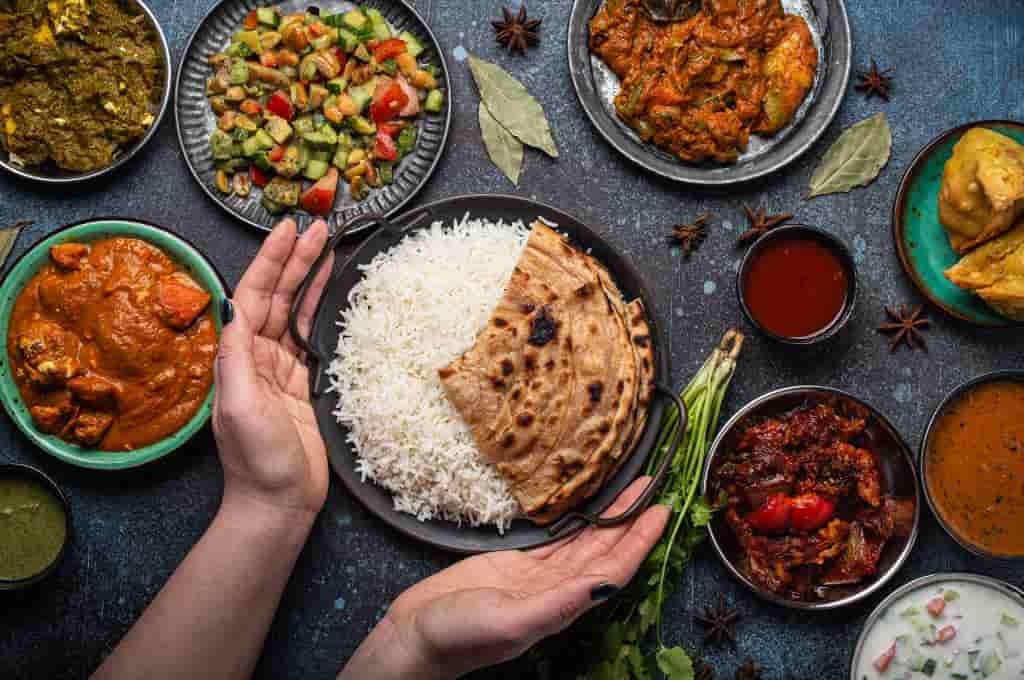
2) Not every Indian is a Vegetarian
India is widely perceived as a vegetarian country, but only about 30-40% of the population is vegetarian. An incredible variety of non-vegetarian food is available in all parts of India. It does, however, have the world’s largest vegetarian population. The vegetarian lifestyle is so widespread that even global food chains like KFC and McDonald’s have to offer a large veg menu to cater to the locals. Every food item sold in India will have a green or red label indicating whether it is vegetarian or not. Vegetarianism in India is mostly driven by religion (Hinduism and Jainism).
3) Hinduism is the World’s Oldest Religion
The official religion of India is Hinduism, the world’s oldest and third-largest religion. As nearly 80% of Indians are Hindu, this comes to 1 billion people. Hinduism has been documented as far back as 5500 BC. There is no known founder of Hinduism, but it thrived as soon as Vedic philosophies emerged. Around 1500 to 500 BC, two epic poems known as the Mahabharata and the Ramayana were composed and eventually written down in the early centuries of the Common Era. These poems used dramatic tales of love and war to shed light on Hindu values and deities. Contrary to popular belief, Hinduism is not pure polytheism as it recognizes Brahma as the creator.
4) The Golden Temple is the World’s Most Visited Place
The Golden Temple in Amritsar is the holiest site for Sikhs, but it is open to people of all faiths. The World Book of Records has declared it the most visited place in the world, with one lakh followers flooding the shrine every day. It serves vegetarian meals (Langar) to over 50,000 people daily, regardless of race, religion, or social class. On holidays and religious occasions, the figure often reaches one lakh. Volunteer in the kitchens for the communal meal to get into the spirit of the place.
To fully experience your visit to this sacred city, you must be well-prepared and informed. A valuable suggestion is to learn Punjabi, the predominant language spoken in Amritsar. Learning the local language will greatly facilitate communication with the locals and enhance your understanding of the city’s culture and customs.
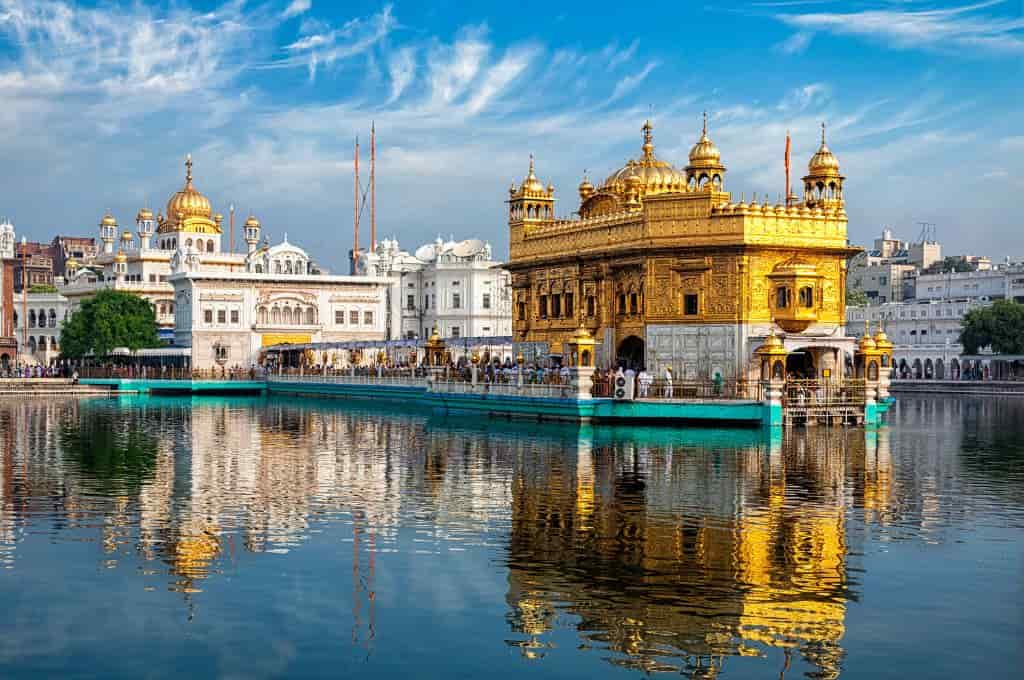
5) Cows are Considered Sacred
The cow is revered and even worshipped in India since it is associated with several Hindu Gods, including Krishna, Indra, and Shiva. There are numerous Gaushalas (cow shelters) where cows are fed and cared for. They are frequently seen freely roaming on crowded streets, unbothered by humans. Cow slaughter is a crime under the Indian Constitution. Beef consumption is also banned in many states.
6) Has the Wettest Inhabited Place on Earth
Mawsynram, a village in Meghalaya, is the world’s wettest inhabited place. The forested region holds a Guinness World Record for the highest average rainfall of around 11,873 mm per year. The monsoon season here lasts six months (April to October). If you’re planning to visit this location, pack your raincoat and umbrella.
7) In India, there are over 3 Lakh Mosques
Although India is predominantly Hindu, Muslims make up nearly 15% of the population. Furthermore, it has the most mosques in the world, with over 3 lakh mosques spread throughout the country. Some of the most well-known are the Mecca Masjid in Hyderabad, the Taj-Ul-Masjid in Bhopal, and the Jama Masjid in New Delhi. When it comes to Hindu temples, there are more than 2 million of them scattered in every nook and corner of the sprawling country.
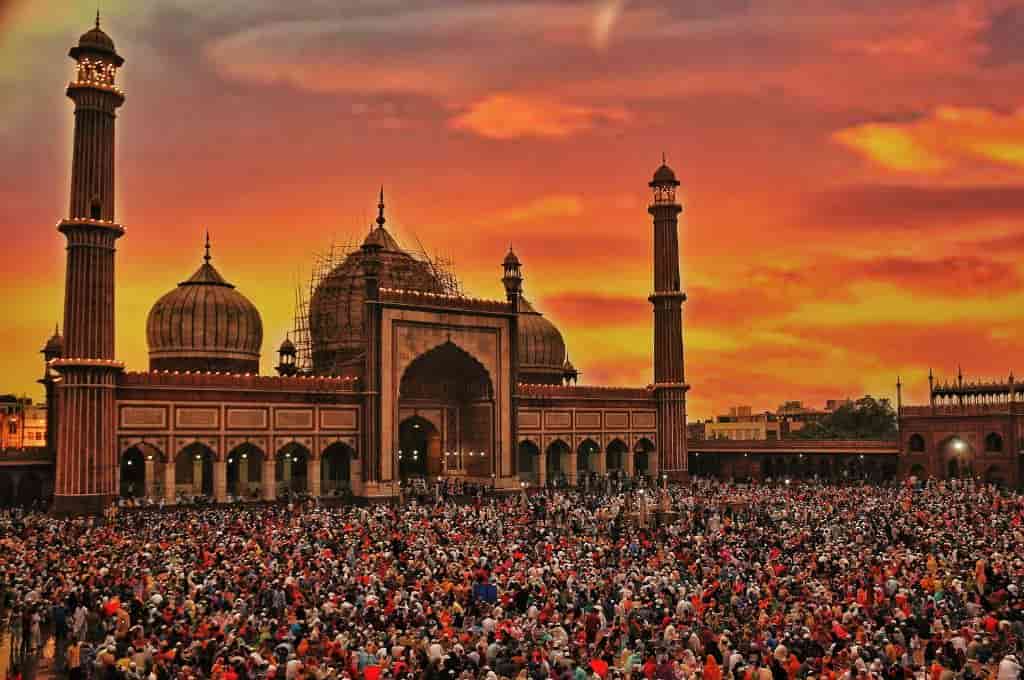
8) The Taj Mahal isn’t a Palace
The magnificent Taj Mahal is actually a tomb commissioned in 1632 by Muslim ruler Shah Jahan in memory of his late wife Mumtaz Mahal. The symbol of love and architectural brilliance took 17 years to complete and was built with precious stones sourced from Sri Lanka, China, Tibet, and different parts of India. During WWII, the entire Taj Mahal was covered in bamboo scaffolding to protect the white mausoleum from bombers flying overhead.
9) The First Country to Mine Diamonds
From the fourth century BC to around 1000 years later, India was the world’s only source of diamonds. The precious stones were found in the Krishna River Delta in Andhra Pradesh. It was not till the 18th century that more diamond deposits surfaced in Brazil, followed by others in South Africa. Since the turn of the 20th century, India’s diamond mining industry has declined as other nations discovered rich diamond veins.
10) There is a Floating Post Office
Not only does India have the world’s largest postal network, but it also has a floating post office. Srinagar has a post office that floats on Dal Lake. It is perched on a houseboat and also houses a philately museum. Not surprisingly, it has become a tourist attraction, with visitors coming to photograph the unusual post office.
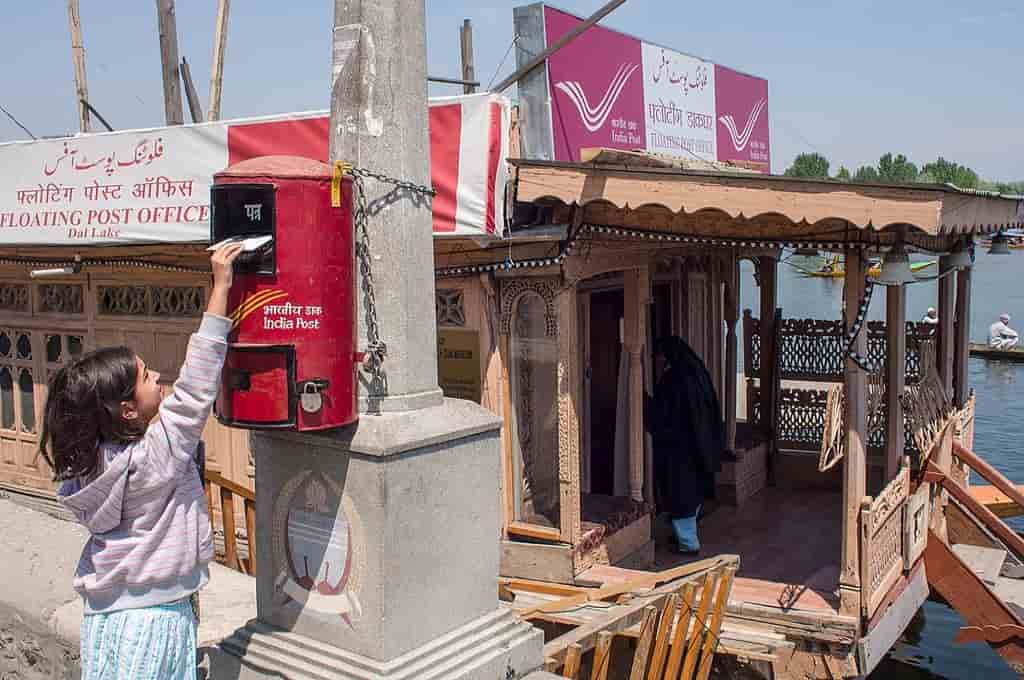
11) Indian Weddings are Extravagant Affairs
Weddings in India are expensive affairs that typically last 3-7 days. The wedding rituals differ according to religion and caste. Ganesh Puja is performed first, followed by Mehndi, Haldi, Sagai (engagement), Sangeet (musical program), Shaadi (main ceremony), and reception. Exorbitant decorations, vibrant ethnic attire, elaborate rituals, peppy Bollywood music, a lengthy guest list, and a dizzying array of food are all part of the celebrations. If you have the chance to attend one, don’t pass it up. It is a once-in-a-lifetime adventure that will give you a vivid glimpse into the culture and traditions of a typical Indian family.
12) 40% of the Population is under 25 Years Old
This year, India may surpass China as the world’s most populous country, a position it has held since at least 1950. The country’s population is estimated to be over 1.4 billion people. China has more than 1.4 billion people as well, but while its population is declining, India’s is increasing. Interestingly, people under the age of 25 account for more than 40% of the Indian population. In India, the median age is only 28 years. In comparison, the median age in the United States is 38, while in China it is 39.
13) Rajasthan has a Temple of Rats
Yes, you read that correctly. The Karni Mata Temple in Bikaner ( Rajasthan ) is dedicated to rats. Thousands of temples inhabit the temple complex, and visitors can freely meander around it. making it one of the country’s unique tourist attractions. For followers of the Charani clan, it has grown to be the most significant place of worship. Pilgrims consider the rats to be their ancestors and visit the temple to pay their homage every year. Many visitors come to this strange temple to satiate their curiosity.
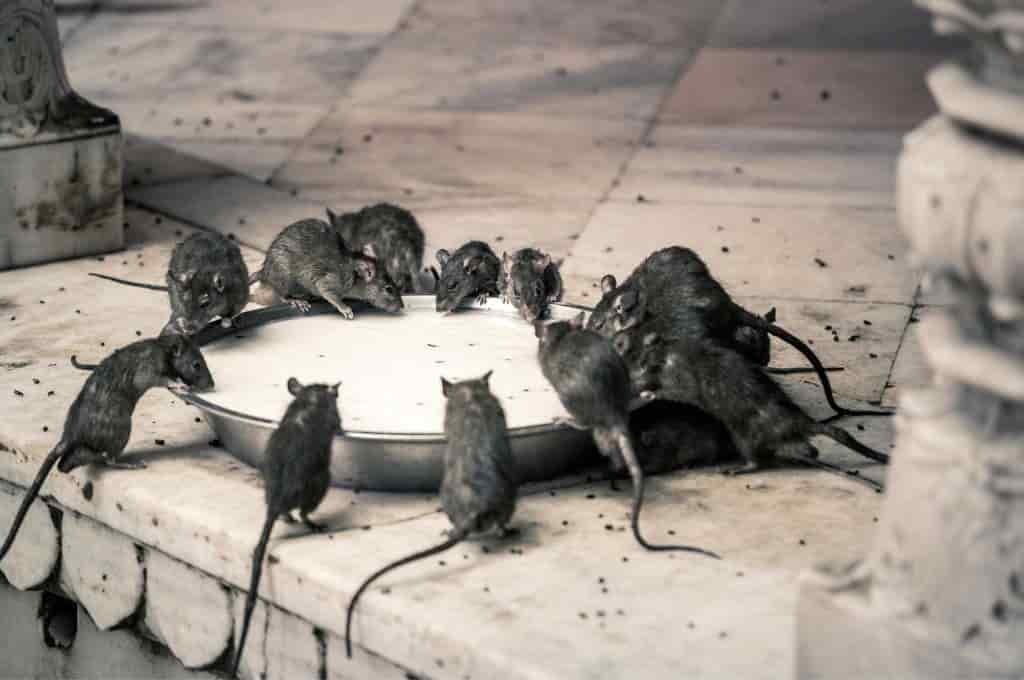
14) Snakes & Ladders and Chess both Originated in India
The popular board game’s origins can be traced back to the early 2nd century BC when it was known as Moksha Patamu. It was designed to teach kids about morality and Karma. The British version of this game, Chutes & Ladders, was released in 1943. Chess, one of the world’s oldest games, was also invented in India in the sixth century AD. King Blahait ordered a Brahmin to create a game that would improve people’s intelligence. The game eventually spread to Persia and then to Southern Europe.
15) The World’s Second-largest English-speaking Country
India is the world’s second-largest English-speaking country. Second, only to the United States, India has around 10% of its population fluent in English, which amounts to approximately 135 million people. This is expected to rise dramatically in the coming years. To facilitate communication, most Indians in major cities speak English as well as their regional language. India has 23 official languages. However, Hindi is the most widely spoken language in India and the language of the central government.
16) The Kumbh Mela is Visible from Space
The Kumbh Mela is the world’s largest religious gathering. While a celebration is held yearly, there is a more significant festival every four and twelve years. The 2013 full Kumbh Mela (12 years) had almost 120 million visitors. The crowds at the 2011 Kumbh Mela were so large (75 million) that they could be seen in satellite photos taken from space.
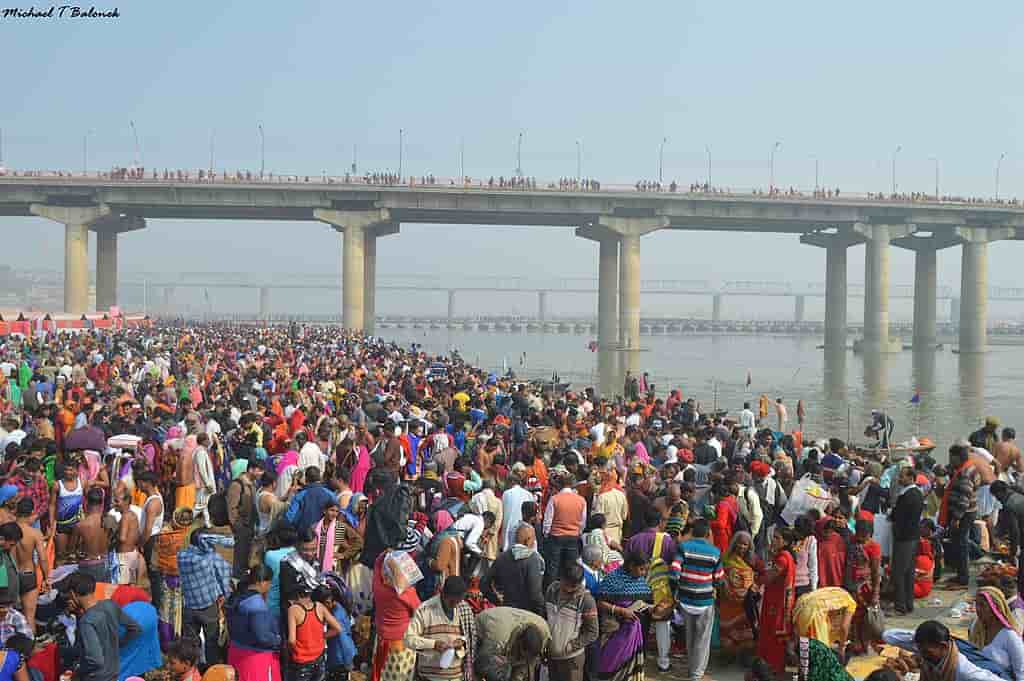
17) Most Indians Prefer to Eat with their Hands
Indians typically use their fingers to eat almost everything, including Rotis, rice, sauces, meats, vegetables, Dosas, and parathas. They feel that eating with your hands is the best way to enjoy authentic Indian meals. So, don’t be hesitant to ditch a spoon, fork, or knife while in India, and try eating with your fingers. Make sure to eat with your right hand because your left hand is reserved for cleaning and other menial tasks.
18) The World’s Largest Spice Producer
India produces roughly 70% of the world’s spices. It is by far the largest producer of spices in the world and exports them across continents. Turmeric, cumin, chili powder, cardamom, cinnamon, vanilla, nutmeg, cloves, and saffron are just a few of the spices grown here. India is also the world’s largest consumer of spices. If you want to experience the aromas and flavors of Indian spices, visit the labyrinth lanes of Khari Baoli (Delhi), Asia’s largest spice market.
19) Second Largest Users of the Internet
India is the world’s second-largest internet user, trailing only China. The number of internet users in the country has risen to nearly 8 million, owing to the explosion in internet networks and usage in rural areas. However, the percentage of people who use it is among the lowest in the world, with only about half of the population having access to it. Interestingly, Facebook now has nearly 370 million active users in India, about 100 million more than it does in the United States. It’s not surprising given that Indians love social media and are avid users of Facebook, Instagram, and WhatsApp.
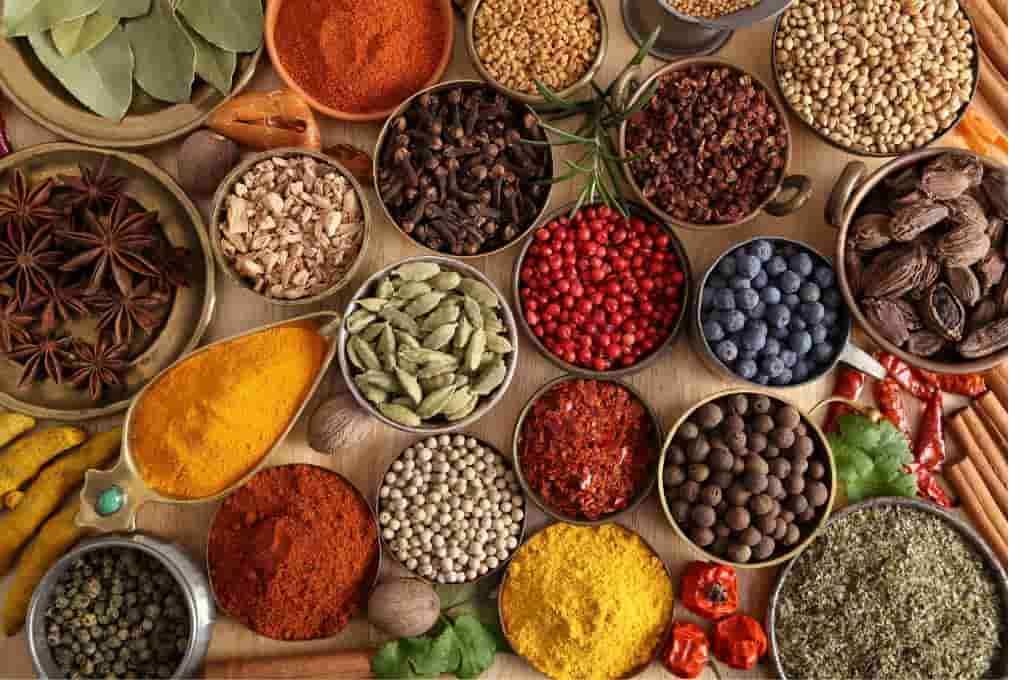
20) India was the Birthplace of Shampoo
It’s a little-known fact that India invented shampoo. The term “shampoo” is derived from the Hindi-Urdu word “champo,” which means “massage.” The first shampoo did not resemble anything we see today. That shampoo was created by combining Sap Indus, dried gooseberry, and other herbal extracts with water. Later, the concept caught on and spread beyond India. It eventually evolved into the commercial bottles that we see today. Many places in India continue to produce the original versions of the shampoo.
21) Alcohol is Prohibited in Some States
Alcohol consumption is banned in 4 Indian states – Gujarat, Bihar, Nagaland, and Mizoram. If you visit these states, you will be unable to purchase alcohol. Furthermore, many states have ‘dry days,’ when it is illegal to sell alcohol. National holidays such as Independence Day (15th August), Republic Day (January 26th), and Gandhi Jayanti (2nd October) are typically dry days all over India.
22) The Land of Many Firsts
Given that India is one of the world’s oldest cultures, it is not surprising that many concepts such as zero, pi, trigonometry, calculus, and algebra originated there. Al-Khwarizmi is regarded as the father of algebra here. India is also the birthplace of Yoga and Ayurveda, which continue to be practiced all over the globe. Yoga is a physical and spiritual discipline that focuses on bringing mind and body into harmony. Yoga meditation centers can now be found in nearly every country.
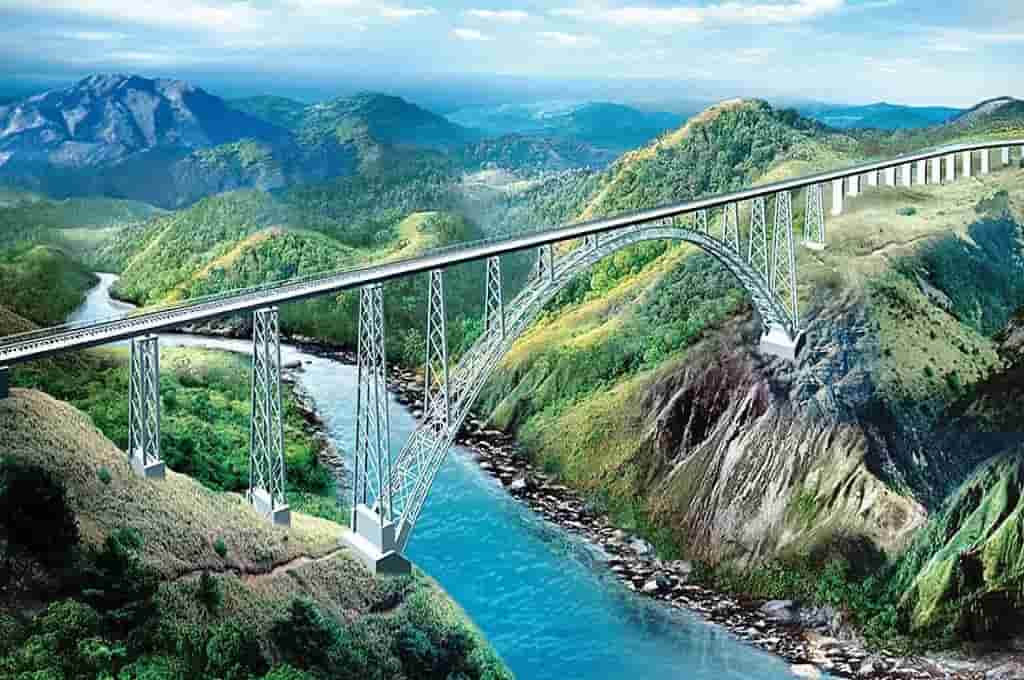
23) Indian Railways Is Extensive
The state-owned railway network in India operates a vast network that stretches across the country for thousands and thousands of miles. It is the world’s second-largest and is run by a single management. Every day, approximately 23 million passengers are transported on this extensive network of 115,000 km connecting more than 7000 stations by over 12600 trains.
24) The World’s Highest Rail Bridge
The world’s highest rail bridge is located between Bakkal and Kauri in Jammu and Kashmir’s Reasi district. The arch-shaped bridge spanning the Chenab River is 1,178 feet above the water, making it taller than Paris‘ Eiffel Tower. After decades of construction, the bridge will be open to the public in 2024. If you are afraid of heights, you may want to avoid the jaw-dropping Chenab Bridge.
25) Home to a Skeleton Lake
Lake Roopkund is located in the Himalayas at about 16500 feet above sea level. The high-altitude glacial lake has become famous for the human skeletons found at the lake’s bottom and surrounding areas. It was discovered in 1942 by a British forest ranger who noticed a skeleton floating in the lake. The small body of water is home to hundreds of skeletons of unknown origin. Skeletons are thought to be the remains of people who died in the 9th century during a severe hailstorm. Visitors are drawn to the scenic route thanks to the human remains.
It is impossible to list all of the interesting facts, so we have chosen a few. I hope they help you appreciate, understand, and love India more.

This Post Has 5 Comments
Wow, I didn’t know about most of these facts! I’m an India enthusiast and I always learn something new from your blog. The one about the Kumbh Mela being the largest spiritual gathering in the world blew my mind. Thank you for sharing these interesting facts with us!
What an enlightening read! I never knew that India had such a rich tapestry of cultures and traditions. The fact about the world’s highest cricket ground was particularly fascinating. Can’t wait to explore more about this incredible country!
This post was incredibly engaging! I had no idea about some of these facts, especially the one about the diversity in languages and cultures. It’s amazing how much there is to learn about India. Thanks for sharing these interesting insights!
I loved reading this post! The facts were not only interesting but also gave me new insights into India’s rich culture and history. I especially enjoyed learning about the unique festivals celebrated across the country. Can’t wait to explore more!
I absolutely loved this post! The facts about India’s diverse culture and rich history are fascinating. I especially enjoyed learning about the unique traditions and festivals that vary across states. Can’t wait to explore more about this amazing country! Thank you for sharing these insights!